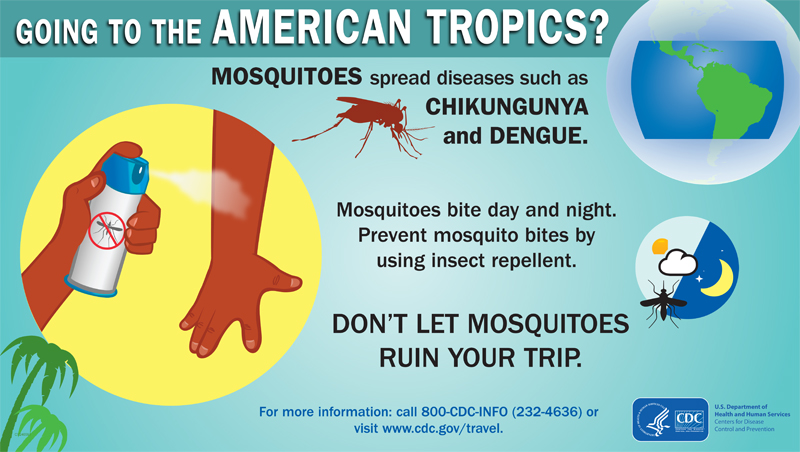![]()
Clinical diagnoses reveal thousands of
Chikungunya cases – CMO
— Health Ministry still building capacity to fight virus
Since the detection of the Chikungunya Virus, the Ministry of Health has sent 298 blood samples to be tested for
the virus at the Caribbean Public Health Agency in Trinidad as Guyana is yet to have in place personnel to undertake such tests at the National Reference Laboratory.
As at last week, the Ministry was able to report that CARPHA has returned results for 115 of the samples with 86 of them being confirmed as the virus. This therefore means that some of the samples sent for testing were negative for the Chikungunya virus. Some were confirmed as dengue cases.
This is according to Chief Medical Officer, Dr Shamdeo Persaud, during a recent interview with media operatives.
The two conditions – Chikungunya and dengue fever – are transmitted by the Aedes Aegypti mosquito which breeds in stagnant water and is common in and around many homes in Guyana. And according to Dr Persaud, the symptoms of both conditions are known to manifest similarly.
He said that since the efforts of the health sector to tackle the prevalence of the Chikungunya virus commenced a few months ago, there has been evidence to suggest a spike in dengue fever, a state of affairs that is gaining the close attention of the Health Ministry.
The symptoms that characterise the Chikungunya virus include headache, rashes, nausea and or vomiting, high fever, muscle and joint pains, some of which are seen in patients with dengue fever too.
But according to Dr Persaud, health officials are able to somewhat differentiate the conditions since the pains in the Chikungunya virus are much worse. “You can actually make a clinical diagnosis based on the severity of the joint pains,” asserted the Chief Medical Officer.
And even as the Ministry awaits confirmation of the status of samples still in the possession of CARPHA, Dr Persaud candidly informed that the suspected cases of the virus have reached the thousands.
“Since we have started to actively collect actual suspected cases (clinical diagnosis) we have close to 2,000 that were reported; there might be more out there because not all the (reports) from the doctors and all the sites are coming in,” disclosed Dr Persaud.
Sustained efforts to combat the virus, he noted, includes national fogging activities even as he pointed out that one of the shortcomings that the Ministry is faced with is that of capacity.
This is in light of the fact, Dr Persaud said, that the same teams are responding to the malaria threats mainly in the interior locations.
He said that the Ministry, through its Vector Control Services Unit, has been training regional personnel to aid the fogging process. Currently all 10 administrative regions of the country are in possession of, at least, one fogging machine, the Chief Medical Officer intimated.
Another boost to the efforts to combat the virus has been realised through the ongoing support the Health Ministry has been gaining from the Ministry of Local Government and Regional Development which was recently able to procure a number of fogging machines.
In the quest to further bolster its capacity to combat the virus, Dr Persaud disclosed that the Health Ministry has been collaborating with the Pan American Health Organisation (PAHO). “There are still some gaps (because) we don’t have all the people that we need…especially when it comes to surveillance, epidemiology, laboratory areas; (we need) additional training for the lab staff,” said Dr Persaud. He went on to note too that “we had anticipated that we would have started to do Chikungunya testing; we have the equipment and so on but we still need to do some additional training.”
Although PAHO has confirmed its collaboration with the Health Ministry to train local personnel to test for the virus, the Chief Medical Officer was however not in a position to ascertain the status of this venture. “I will have to check with the laboratory,” Dr Persaud told media operatives.
Guyana, with the support of CARPHA, was able to confirm its first two cases of the virus in May, in Canje, Berbice, Region Six. It was subsequently detected in several other parts of the country forcing regional health authorities to up their efforts to support a national Chikungunya Virus response organised by the Health Ministry.
Among the tactics being used by the Health Ministry, together with other health advocates, is to raise awareness about the importance of ridding the environment of breeding sites for the virus-transmitting mosquito.
While the virus is known to be rarely fatal, failure to treat its symptoms could prove to be detrimental.
These guys have one fogging machine for every Region, yet one hears nothing about the many stagnant drians in the many villages.
.







 <cite>The Aedes aegypti mosquito spreads chikungunya. (FP)</cite>
<cite>The Aedes aegypti mosquito spreads chikungunya. (FP)</cite>
